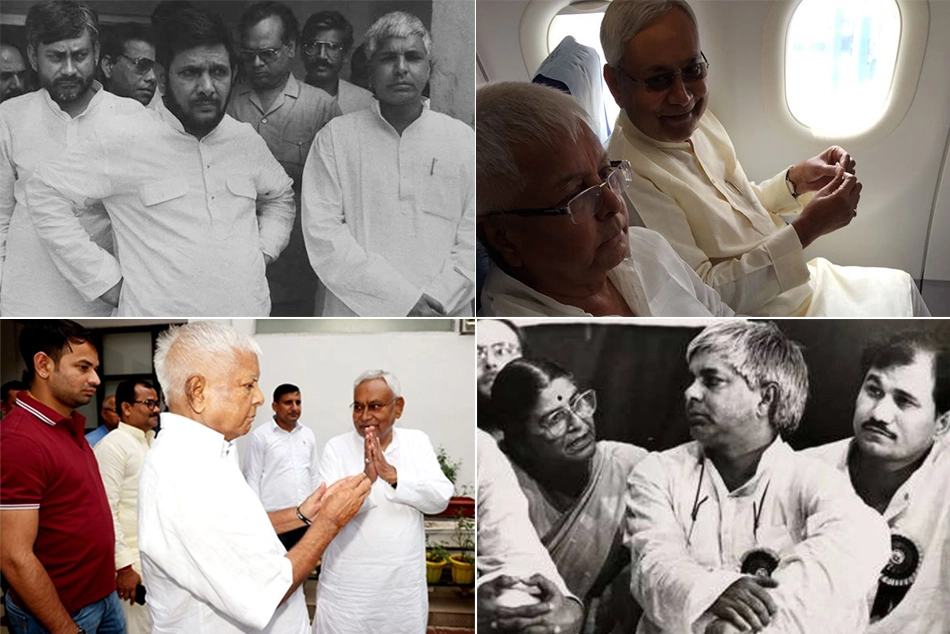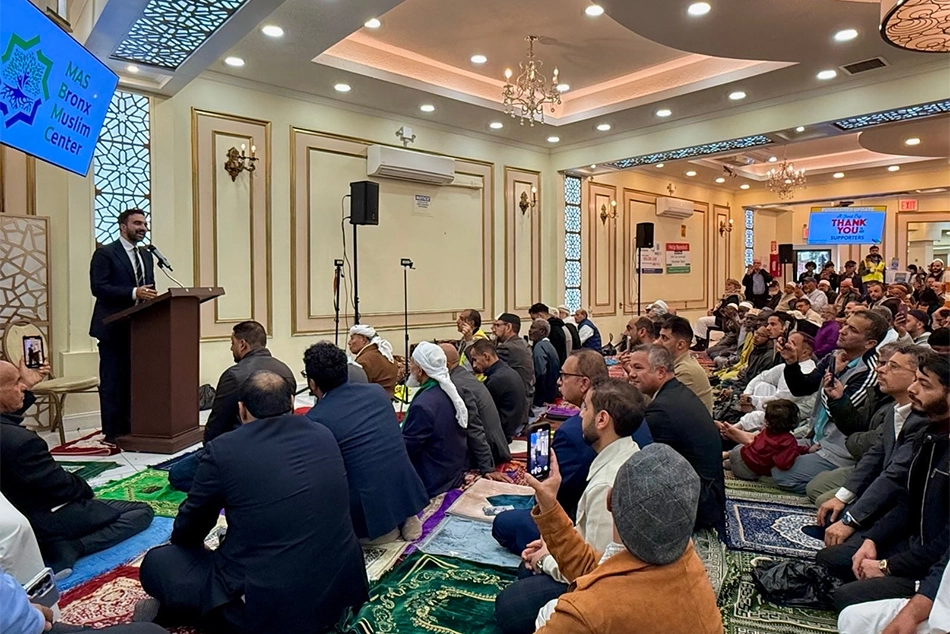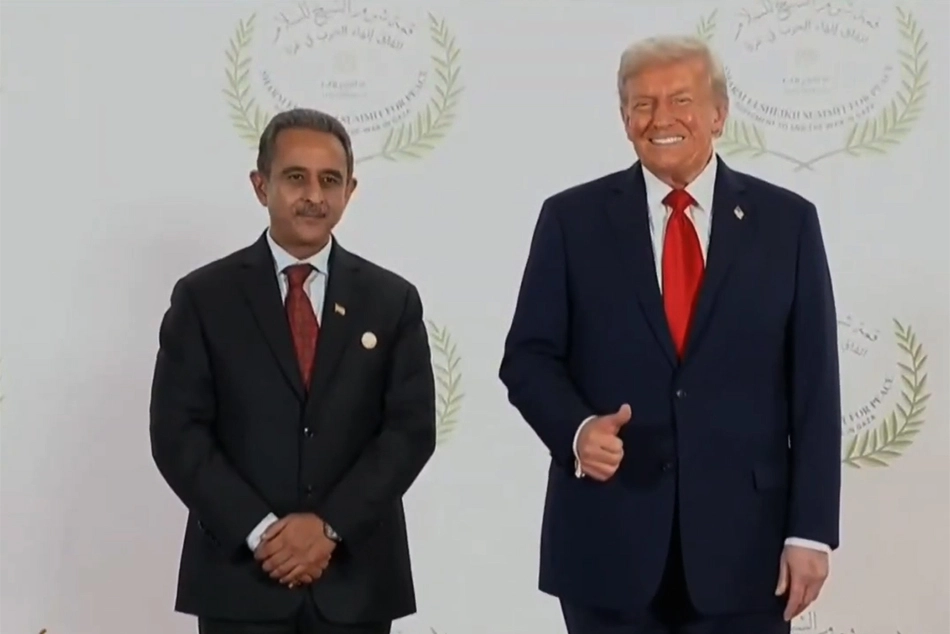
Bihar 2025 Election: A Referendum on Memory
Bihar’s 2025 election is not a contest of parties — it’s a referendum on memory and about whether the poor still believe in a Constitution that forgot them.

The Dust of Mandal: When Caste Became a Constitution
Bihar is not a state — it’s a metaphor carved in red soil and bureaucratic cruelty. A land where democracy first spoke in the accent of the poor and then was muted by the elite’s English grammar.
When the Mandal Commission report was tabled in 1980, it wasn’t merely a bureaucratic file — it was the subaltern declaration of independence. “Caste is not just a division of labour, but a division of labourers,” B.R. Ambedkar had said half a century earlier. Bihar heard that line not as a slogan but as scripture.
In the dusty alleys of Gaya and the flood plains of Sitamarhi, that sentence became a war cry. Mandal was not about reservation — it was about revenge. Revenge against centuries of being told that dignity was a privilege.
V.P. Singh, the reluctant warrior, unleashed this storm in 1990. He would later say, “I knew Mandal would shake India — but I didn’t know it would expose the soul of India.”
It did. And Bihar became its ground zero.
Lalu Prasad Yadav — the man from Phulwaria, with a tongue sharper than Delhi’s Englishmen, turned the Mandal moment into mass politics. For the first time, India saw a chief minister who looked, talked, and laughed like those he governed. He made power smell of the village pond, not the Delhi perfume.
Lalu Prasad: The Last Socialist Clown or the First Subaltern Messiah?
Critics called him a buffoon, a “joker in power.” But the poor of Bihar called him Apna Aadmi — one of us. He mocked the bureaucracy, insulted upper-caste arrogance, and replaced political polish with rustic audacity.
When he famously said, “Main toh gohri ke gohri bhi nahi khata, par saap ko doodh pilane waale mujhe desh chalana sikha rahe hain!” — the English-speaking classes laughed. The poor clapped. It wasn’t comedy. It was rebellion with rhythm.
Lalu’s rule (1990–2005) was India’s great democratic experiment: Could a state run on caste justice instead of class privilege? Could the “backward” rewrite history written in Sanskrit and English?
He gave Dalits and OBCs the confidence to stand up to landlords, police, and the bureaucracy. His rallies weren’t speeches; they were rehearsals for equality. “Humra ke neta nahi, humra ke izzat milal hai,” an old woman told a journalist in 1996 — “He didn’t just become our leader; he gave us dignity.”
But dignity doesn’t fill stomachs. By the late 1990s, Bihar’s roads became metaphors for its politics: broken, muddy, endless. Development stopped at the borders of caste identity. Lalu’s resistance turned into routine. His revolution became ritual.
The Congress had earlier betrayed the poor with slogans of socialism; Lalu betrayed them with its parody. And when corruption arrived — the fodder scam, the dynasty, the arrogance — the moral empire collapsed from within.
Nitish Kumar: The Engineer Who Dismantled the Dream
Nitish Kumar entered as the anti-Lalu, an engineer, a bureaucrat’s favourite, the “good Bihari.” Where Lalu spoke of izzat, Nitish promised vikas. Where Lalu sang folk songs, Nitish cited data. For the middle class of Patna and Delhi, he was an intellectual detox — the “return of sanity.”
But what followed was more sophisticated betrayal. Nitish built roads, schools, and slogans — but quietly dismantled Mandal’s ideological skeleton. Bureaucrats once scared of the poor were now emboldened by “good governance.”
Nitish once said, “Development is the real social justice.” A clever line — and a dangerous one. Because in Bihar, “development” became the new disguise for re-casteing society through the market and the bureaucracy.
Reservation was diluted through technicalities, caste surveys delayed through committees, and representation replaced by symbolism. When the 2023 caste survey finally arrived — after decades of denial — it showed what Mandal knew all along: Bihar’s real majority were the ignored. 63% OBCs, 20% Dalits — yet power still wore the face of bureaucracy and Brahmanism.
Nitish promised reform but married the BJP. Then divorced it. Then remarried. Then divorced again. In this absurd melodrama, Bihar became a laboratory of opportunism. The “Sushasan Babu” became a tragicomic character in the serial of power.
The Bureaucracy vs. the Backward
Behind every political betrayal in Bihar stands the bureaucracy — the invisible ruling caste. In 1990, a senior IAS officer reportedly told a journalist, “We’ll tolerate a socialist chief minister, but not a subaltern one.”
They tolerated Nitish; they sabotaged Lalu.
From district collectors to central commissions, caste continues to decide who implements and who suffers. The “meritocracy” that mocks reservation is nothing but caste arrogance wrapped in English fluency.
In one of his sharpest remarks, Ambedkar warned, “The governing class in India is not a class that governs in the interests of the people; it governs in the interests of its own caste.”
That line could be Bihar’s epitaph.
From Class Struggle to Corruption Narrative
By the 2000s, the national media — owned and operated by upper-caste capital — discovered a new weapon: ridicule. Lalu was turned into a caricature. “Jungle Raj” became a national catchphrase — not for inequality, but for the audacity of the poor to rule.
It was not that Bihar became more lawless; it was that law began to fear the lower castes. The upper classes called it chaos; the poor called it justice. But television doesn’t broadcast the subaltern conscience.
In the pages of India Today and the screens of NDTV, Lalu became the “bad governance” mascot. Bihar became the nation’s punching bag — the symbol of backwardness, even as Delhi’s glitter was built on migrant Bihari labour.
As Marx once said, “The tradition of all dead generations weighs like a nightmare on the brains of the living.” In Bihar, it wasn’t just the dead — it was the privileged who refused to die.
The Saffron Seduction: How the BJP Discovered the OBC Vote but Not the OBC Soul
The Cow, the Constitution, and the Calculus of Votes
The Bharatiya Janata Party did not invent “Hindu unity” — it commodified it. In the 1990s, when the Mandal storm was dividing caste arithmetic, the BJP found its counter: Ayodhya. The slogan “Mandir wahin banayenge” was not just religious — it was political morphine. It turned the poor Hindu against himself.
Ram became the saffron antidote to Mandal. While Lalu was mobilising caste consciousness, the BJP was weaponising religious sentiment.
As veteran socialist Madhu Limaye once warned, “Whenever caste begins to question power, religion will come to the rescue of privilege.”
The BJP’s top leadership — dominated by upper castes — saw in the OBC a vote bank, not a voice. They imported leaders from backward communities but never let them lead. The message was clear: “You can chant Ram, not write the rules.”
The Mandal vs. Mandir War
The 1990s in Bihar were not just about political rivalry — they were an ideological civil war. On one side stood Lalu with his Mandal Mandir, on the other stood Advani with his Rath Yatra. In one corner, the backward classes demanded representation; in the other, the upper castes demanded revenge.
When Lalu stopped Advani’s Rath in Samastipur in 1990, history trembled. That single act symbolised the clash between social justice and religious spectacle.
“Yeh rath nahi, rashtriya asamanya yatra hai,” Lalu declared — “This is not a chariot of unity, it’s a procession of inequality.”
But the Indian media didn’t see defiance; they saw drama.
Advani was celebrated as a national hero. Lalu Prasad Yadav was caricatured as a rustic roadblock.
Mandal politics was painted as divisive, while Mandir politics was called patriotic. It was the greatest semantic scam of modern India — turning equality into disunity, and hierarchy into nationalism.
Bureaucratic Betrayal: The English-Speaking Caste
The saffron project succeeded not only because of politicians but because of bureaucrats — the self-proclaimed custodians of “merit.” In every civil service corridor, there’s a quiet coup against reservation.
After Mandal, the IAS and IPS lobbies launched an invisible counterattack: entrance exams were made more elitist, interviews more subjective, and recruitment more urban.
When Lalu tried to democratize postings, he was accused of “politicizing the administration.” When upper-caste officers monopolized promotions, it was called “maintaining efficiency.”
As Ambedkar warned, “The caste system is not a division of labour, it is a division of labourers — graded inequality sanctified by tradition.”
In modern India, that sanctification was outsourced to bureaucracy.
Even Nitish Kumar — with all his engineering precision — failed to dismantle it. His “good governance” only polished the same system with the rhetoric of reform.
The Great Reservation Rollback
The rollback of Mandal didn’t happen through Parliament; it happened through policy.
Consider how recruitment exams became “outsourced,” how “contractual appointments” replaced regular jobs, and how “privatization” quietly erased reservations.
From Railways to public universities, the new India discovered a legal trick: If you don’t create permanent jobs, you don’t need to reserve them.
In 2021, Bihar had nearly 3.2 lakh vacant government posts — more than the total jobs filled in the previous five years. The unemployed OBC youth became easy prey for Hindutva propaganda — lured by “Hindu pride” while robbed of material justice.
“Garib ke liye Ram mandir kya karega jab uske paas roti nahi hai?” a farmer from Araria told a reporter in 2019. “Par BJP wale humko keh rahe hain Ram se vote do, naukri baad mein milega.”
That’s the saffron miracle — turning deprivation into devotion.
The Media’s Manufactured Morality
Every democracy has its priests; in India, they anchor primetime shows. The same journalists who mocked Mandal as “caste politics” celebrate “Hindu consolidation” as “national resurgence.”
From 2005 to 2020, Bihar was described by TV channels as “finally progressing under Nitish,” ignoring the fact that its migration rate doubled, its per capita income stayed among the lowest, and its youth unemployment remained catastrophic.
The English-speaking elite doesn’t fear Bihar’s poverty — it fears its political consciousness. The upper-caste anchors who once called Lalu “Jungle Raj” now fall silent when corporate cronies loot entire states.
“Jungle Raj,” it turns out, was never about crime. It was about caste crime — the crime of the lower caste claiming power.
The New Faces of the Old Order
The BJP’s OBC poster boys — from Narendra Modi to Nityanand Rai — serve as the saffron insurance against Mandal revival. They are symbols of inclusion, not instruments of equality.
When Modi declared in Parliament, “Main toh ek garib parivar se aaya hoon, backward caste se hoon,” he wasn’t invoking Lohia or Ambedkar — he was weaponizing poverty to immunize privilege.
BJP’s caste politics is not empowerment; it’s exhibitionism.
The saffron leadership found a formula: Let the backward classes shout “Jai Shri Ram,” but never “Jai Bhim.” Let them march with flags, but never with questions.
The same BJP that claims OBC pride refuses to release nationwide caste census data.
The same BJP that preaches “Sabka Saath” quietly fills central institutions with upper-caste dominance.
It’s a government where symbolism replaced substance. Ambedkar is garlanded every April, but his Constitution is mutilated every session.
The Sangh’s Silent Doctrine: Sanskritisation as Strategy
The RSS discovered early what colonial rulers already knew — the easiest way to control the oppressed is to give them a hierarchy to aspire to.
“Become a better Hindu” became the new path to acceptance.
Mandal had threatened to dismantle caste; the Sangh decided to repackage it.
They didn’t fight caste; they franchised it. In rural Bihar, the OBC youth who once joined socialist student unions are now recruited as foot soldiers for Hindutva processions.
As sociologist Gail Omvedt once said, “Hindutva’s genius lies in converting revolt into ritual.”
Every time a lower-caste man shouts “Jai Shri Ram,” he feels included in a faith that still excludes him from its priesthood. That’s not inclusion — it’s intoxication.
The Silent Sabotage of Mandal 2.0
In 2023, when the Bihar caste survey revealed that OBCs and EBCs form nearly two-thirds of the state’s population, the political establishment panicked. The BJP called it “divisive.” Nitish pretended it was revolutionary. But neither dared to turn it into a national demand.
Because caste census means accountability — not just political, but moral. It would expose that even in “New India,” old hierarchies govern ministries, corporations, and courts.
Ambedkar’s unfinished revolution meets its fiercest enemy not in opposition benches but in bureaucratic silence. As the late socialist Karpoori Thakur once said, “Caste is not dying; it is changing its costume.”
The Moral Hypocrisy of Power
The BJP claims to be the party of the poor but fears the politics of the backward.
Its moral narrative is that of selective victimhood — glorifying ancient wounds, ignoring contemporary injustices. It can cry for Ram’s humiliation in mythology but not for Rohith Vemula’s suicide in a university hostel.
When you erase caste from the conversation, you protect the caste system. When you chant “Hindu unity,” you silence the oppressed Hindu.
That’s the saffron genius — turning centuries of oppression into the theatre of faith.
The Youth: Educated, Unemployed, Enraged
In Bihar, the revolution now wears a cracked smartphone and a torn degree certificate. Every second young man has a postgraduate degree — and no job. Every second young woman has a dream — and no safety.
The panchayat gossip has changed. It no longer asks, “Who won the election?” but “Who got the government job?” Because in Bihar, a job is not employment; it’s emancipation.
The 2023–24 NSSO data showed Bihar’s unemployment among graduates at over 33% — more than double the national average. The state produces teachers who never enter classrooms, engineers who never touch machines, and doctors who prepare for UPSC because healing pays less than hierarchy.
A young graduate from Madhubani summed it up, “We are Mandal’s children, but Delhi treats us like migrants.”
The “Mandal generation” that once fought for reservation is now fighting to even find vacancies. Privatization and centralization have turned social justice into a museum piece.
The question is no longer “Who rules Bihar?” but “Who ruined Bihar?”
The Silence of the Socialist Parties
The tragedy of Mandal politics is not that it failed — it fossilized. The heirs of Lohia and Karpoori Thakur turned into landlords of slogans. The RJD became a family trust; the JD(U) a consultancy firm.
Once, politics in Bihar was an act of rebellion. Now, it’s an industry of inheritance.
In 2024, when youth marched demanding the release of caste census data nationwide, the so-called socialist leaders issued polite tweets — nothing more. Their silence was louder than any saffron slogan.
As Jayaprakash Narayan once said, “Silence in the face of injustice is the worst form of corruption.”
The old socialists are now curators of nostalgia. They speak of Lohia’s dream but live in Lutyens’ comfort. They remember Ambedkar’s Constitution but forget his warning, “Political democracy cannot last unless there lies at the base of it social democracy.”
Women, Dalits, Pasmandas — The New Coalition of the Betrayed
While men debated caste arithmetic, women carried its consequences. Reservation in local bodies gave them chairs, not choices. Yet, Bihar’s women have quietly become the backbone of Mandal 2.0 — more radical, more articulate, less forgiving.
When Nitish distributed free cycles for girl students, it wasn’t just welfare — it was symbolism of movement. But two decades later, the same girls cycle to coaching centres with degrees that lead nowhere.
The Dalits, meanwhile, have seen their heroes turned into holidays. Ambedkar is printed on government posters, but not in government policies.
And the Pasmanda Muslims — historically as oppressed as Dalits — are now courted by the BJP’s cosmetic inclusion. “Humko Muslim kaha, par kabhi insaan nahi maana,” said an elderly weaver in Bhagalpur — “They called us Muslim, but never human.”
This coalition — of unemployed youth, marginalized women, Dalits, and Pasmandas — is Bihar’s unfinished rebellion. It is no longer a movement of identity alone, but of justice denied.
The Bureaucratic Bourbons: Learning Nothing, Forgetting Nothing
If Bihar’s political class betrayed Mandal, the bureaucracy buried it.
The caste survey of 2023 was not a reform — it was a reluctant confession. And like all confessions, it came too late and too polished.
In files and reports, caste is still treated as a sociological curiosity, not a structural oppression. The same officers who recite Ambedkar in seminars ignore his message in service rules.
“Merit” has become the new Manusmriti. Those who inherited privilege now demand performance from the historically excluded.
In Delhi’s ministries, Bihar’s representation remains tokenistic. In central universities, “diversity” is a word used in prospectuses, not in hiring.
Ambedkar’s Constitution gave equality as law; the state turned it into literature.
The Corporate Coup and the Death of the Public Sector
Bihar’s tragedy is that it produces labour, not industry. Its youth build Mumbai’s skyscrapers and Delhi’s metros — but their own villages crumble.
When public sector jobs shrank, private companies became the new zamindars. The rich are no longer landlords with whips; they are CEOs with contracts.
The “Make in India” slogan bypassed Bihar like a train that never stops at small stations. Even the few industries — sugar mills, paper factories, and small-scale units — died of neglect and policy bias.
The state that once shouted “Bihar ka haq chahiye” now begs for investments.
The youth understand this farce.
“The same BJP that sells airports to Adani tells us to sell our labour to survive,” a student in Muzaffarpur said.
The Mandal dream was about redistribution. The Modi era turned redistribution into branding.
Mandal as Memory, Mandal as Future
Mandal is not a policy. It is a mirror. It shows India what it truly is, not what it pretends to be.
In 1990, Mandal was about seats. In 2025, Mandal is about space — in jobs, in ideas, in narratives.
The youth of Bihar are rediscovering it — not through political parties, but through protest. Student movements across Patna, Darbhanga, and Ara are no longer asking for sympathy; they are demanding structure.
“Humein vote chahiye nahi, humein hissedari chahiye,” says a young activist in Patna — “We don’t want votes; we want our share.”
This is the new Mandal — not begging for recognition, but reclaiming ownership.
The Death of Delhi’s Democracy
Every election in Bihar is a referendum on Delhi’s arrogance. From Nehru to Modi, every prime minister has treated Bihar like a laboratory of loyalty.
Funds are delayed, policies dictated, leaders bought and sold. Even the Nitish–BJP–RJD merry-go-round of alliances is not politics; it’s puppetry.
In 2025, Bihar is asking a dangerous question, “Who defines democracy — Delhi’s elites or the backward who built this nation brick by brick?”
The Election Commission may count votes, but history will count dignity.
The Rebirth of Mandal: Justice Unfinished
The Mandal movement never died — it was buried alive. But revolutions, like seeds, germinate in the dark.
Bihar’s 2025 election is not a contest of parties — it’s a referendum on memory. It’s about whether the poor still believe in a Constitution that forgot them.
The youth shouting slogans today are not chanting for Lalu or Nitish; they are demanding a new grammar of justice. They want Ambedkar without tokenism, Lohia without footnotes, and Lalu without corruption.
This is Mandal reborn — stripped of populism, sharpened by pain.
What Bihar Can Teach India
Bihar’s political soil is India’s conscience — repeatedly ignored, repeatedly resurrected. It teaches that democracy without social justice is just decorum for inequality.
As the historian Ramachandra Guha once wrote, “Every idea that India forgets begins to breathe again in Bihar.”
If the country still believes in equality, it must thank Bihar’s defiance. If the country still fears equality, it must fear Bihar’s return.
Because Bihar’s backward classes are not begging anymore. They are building a new language of power.
Mandal Will Return — Not as Politics, But as Justice Unfinished
When Lalu shouted “Bhura baal saaf karo!” it was a crude slogan — but it carried a philosophical truth: that democracy means discomfort for those long comfortable. When Nitish promised “good governance,” he gave the elite back their comfort.
Now, the youth of Bihar — jobless, angry, awakened — stand at the intersection of both betrayals. They know that Lalu gave them a voice, Nitish sold it to power, and the BJP sanctified that sale with saffron slogans.
The real “Jungle Raj” is not Lalu’s anarchy — it is the silence of injustice wearing the mask of governance.
Bihar will decide in 2025 whether democracy belongs to Delhi’s elite or to the backward who built the Republic brick by brick. And when Mandal returns — as justice unfinished — it won’t come to negotiate.
It will come to collect.
EPILOGUE: The Republic of the Forgotten
In every railway station in India, you will find Bihar — carrying sacks of cement, cleaning compartments, serving tea, coding software, sweeping offices, teaching children, guarding gates. They built the nation, yet remain its metaphor for misery.
But the history of Bihar is not tragedy; it is testimony. It reminds India that democracy is not a gift from the upper castes — it is a loan from the poor, long overdue for repayment.
As Ambedkar wrote in 1949, “We are entering a life of contradictions — political equality with social and economic inequality. Those who suffer these contradictions will one day blow up the structure.”
That day may not be far.
And when it comes, it will begin — as always — from Bihar.
[The writer, Dr. Tata Sivaiah, is a mathematician who counts revolutions, not riches. He decodes India’s buried conscience with surgical satire and historical fire — from Buddha’s enlightenment to Ashoka’s remorse. Part rebel, part researcher, he turns every article into an uprising and every paragraph into a protest. He doesn’t rewrite history — he exposes the lies that rewrote it.]
Follow ummid.com WhatsApp Channel for all the latest updates.
Select Language to Translate in Urdu, Hindi, Marathi or Arabic







